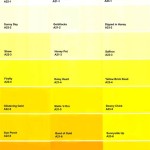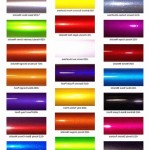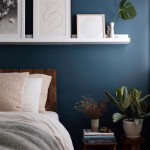What Colors Does Chalk Paint Come In?
Chalk paint, renowned for its matte finish and exceptional adherence to various surfaces, offers a broad spectrum of color options to suit diverse aesthetic preferences. The color palette available in chalk paint ranges from subtle neutrals to vibrant, saturated hues, providing ample creative possibilities for furniture refinishing, decorative projects, and artistic endeavors.
The perceived color availability of chalk paint can vary depending on several factors, including the brand, the specific retailer, and whether the user is willing to engage in color mixing. Some brands offer a curated selection of pre-mixed colors, carefully chosen to reflect current design trends and classic styles. Others may provide a smaller core range that is designed to be easily mixed, allowing users to create custom colors tailored to their exact specifications. The availability of certain colors can also be influenced by seasonal trends and the demand for specific shades.
Color accuracy can also be a point to consider. There is inherently some color variations depending on the surface material the chalk paint is applied to and the amount of coats that were applied. If color accuracy is a concern, apply a sample to the material you plan to paint and verify if the color is to your liking.
The Spectrum of Neutral Chalk Paint Colors
Neutral colors form the foundation of many chalk paint projects, offering versatility and serving as a complementary backdrop for bolder accents. White, in its various shades, is a staple, providing a clean, bright canvas that can be easily distressed for a vintage look or used as a base for layering other colors. Off-whites, creams, and ivories offer a softer alternative to pure white, adding warmth and depth to a space. These lighter neutrals are particularly well-suited for creating a shabby chic or farmhouse aesthetic.
Grays, ranging from cool, industrial tones to warm, greige hues, are also a prominent category within the neutral chalk paint spectrum. Light grays offer a sophisticated and understated elegance, while darker grays provide a more dramatic and contemporary feel. Greige, a blend of gray and beige, combines the best of both worlds, offering a versatile neutral that complements a wide range of color palettes.
Beiges and tans, though less frequently used than whites and grays, can still play a significant role in chalk paint projects, particularly for creating a warm and inviting atmosphere. These earth tones evoke a sense of naturalness and can be used to create a rustic or bohemian look. Different shades of brown, from light taupe to deep chocolate, can also be found in some chalk paint lines, providing a grounding and comforting presence.
The choice of a neutral chalk paint color often depends on the overall design scheme of the room or the desired aesthetic of the piece being painted. Light neutrals tend to make spaces feel larger and brighter, while darker neutrals can add depth and drama. The specific undertones of the neutral color, such as warm or cool, should also be considered in relation to the other colors in the space.
Exploring Vibrant and Saturated Chalk Paint Colors
Beyond the realm of neutrals, chalk paint encompasses a wide array of vibrant and saturated colors, allowing for bold and expressive design choices. These colors can be used to create focal points, add personality to a space, or evoke specific moods and emotions. The availability of these colors varies from brand to brand, but generally includes shades within the primary and secondary color ranges.
Blues, ranging from soft pastels to deep navy hues, are a popular choice for chalk paint projects. Light blues evoke a sense of tranquility and calmness, while darker blues add a touch of sophistication and elegance. Turquoise and teal shades can add a pop of color and create a coastal or bohemian vibe. The shade of blue selected should be carefully considered based on the desired effect and the overall color scheme.
Greens, from muted olive tones to bright emerald shades, offer a connection to nature and can bring a sense of freshness and vitality to a space. Light greens evoke a feeling of peace and serenity, while darker greens add depth and richness. Forest green and hunter green are popular choices for creating a traditional or rustic aesthetic. The specific shade of green can greatly influence the overall mood and atmosphere of the space.
Yellows, oranges, and reds are often used as accent colors in chalk paint projects, adding warmth and energy to a space. Yellows can be used to brighten up a room and create a cheerful atmosphere, while oranges add a touch of warmth and excitement. Reds, being a bold and dramatic color, should be used sparingly and strategically to create a focal point or add a touch of glamour. These warmer colors can be used to create a welcoming and inviting atmosphere.
Pinks and purples, ranging from soft pastels to deep jewel tones, can add a touch of femininity and elegance to chalk paint projects. Light pinks evoke a sense of romance and delicacy, while darker purples add a touch of mystery and sophistication. These colors are often used in bedrooms, nurseries, or other spaces where a soft and calming atmosphere is desired. The intensity and shade of the pink or purple should be carefully chosen to achieve the desired effect.
The Art of Mixing Chalk Paint Colors
One of the most appealing aspects of chalk paint is its mixability, allowing users to create custom colors tailored to their specific needs and preferences. By combining different pre-mixed colors, it is possible to achieve a wide range of unique shades and tones that may not be readily available in commercially produced chalk paint lines. This opens up a world of creative possibilities and allows for greater personalization of projects.
The fundamental principles of color theory apply when mixing chalk paint colors. Understanding the color wheel and the relationships between primary, secondary, and tertiary colors is essential for achieving desired results. Experimentation is often necessary to achieve the perfect shade, and it is advisable to start with small amounts of paint and gradually adjust the proportions until the desired color is achieved. Keeping detailed notes of the color mixing ratios can be helpful for replicating the color in the future.
When mixing chalk paint colors, it is crucial to use a clean container and mixing tools to avoid contamination. It is also important to thoroughly mix the paints to ensure a uniform color. The mixed paint should be tested on a small, inconspicuous area before applying it to the entire project to ensure that the color is satisfactory. The color of the mixed paint may appear slightly different when wet than when dry, so it is important to allow the test area to dry completely before making a final decision.
Creating custom neutral colors is a common application of chalk paint mixing. By adding small amounts of black, brown, or gray to white chalk paint, it is possible to create a wide range of off-whites, creams, and grays. Similarly, adding small amounts of yellow, orange, or red to beige or tan chalk paint can create warmer earth tones. These subtle adjustments can make a significant difference in the overall look and feel of a project.
Mixing vibrant colors together can also yield interesting and unexpected results. Combining primary colors, such as blue and yellow, to create green, or red and yellow to create orange, is a fundamental technique. Experimenting with different ratios of the primary colors can produce a wide range of hues within the secondary color range. Similarly, mixing secondary colors together can create tertiary colors, further expanding the color palette.
It is important to note that the specific chalk paint used for mixing can affect the final outcome. Different brands of chalk paint may have slightly different pigment compositions, which can influence the resulting color. It is therefore advisable to use chalk paint from the same brand when mixing colors to ensure consistency and predictability.
Color matching is another common application of chalk paint mixing. If a specific color is desired, such as a color found in a fabric sample or a photograph, it is possible to mix chalk paint to match that color. This requires careful observation and experimentation, and may involve using a color matching tool or software. The color matching process can be time-consuming, but can ultimately result in a perfect match for the desired color.
Ultimately, the color possibilities with chalk paint are virtually limitless, thanks to its inherent mixability. Whether choosing from a curated selection of pre-mixed colors or embarking on the adventure of creating custom shades, chalk paint offers a versatile medium for expressing creativity and achieving unique design aesthetics.

Chalk Paint Colors

Chalk Paint By Annie Sloan Colors Chart

Our Chalk Paint Colours Pintyplus

Chalk Paint Annie Sloan Colors

Chalk Paint By Annie Sloan Earth Goods Pottery
Annie Sloan Chalk Paint

Chalk Paint Colors

Waverly Chalk Paint Colors

Rust Oleum Chalk Chalky Colour Chart Rustoleum Paint Colours Colors

Dixie Belle Chalk Mineral Paint 64 Colors 8oz 16oz Sizes Furniture Craft
Related Posts








